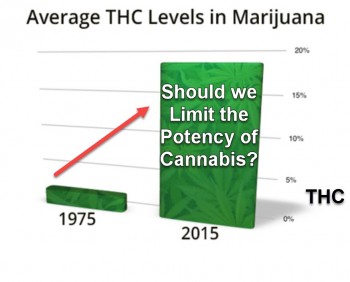
The Great Cannabis Heart Scare: Dissecting Another Prohibition Propaganda Campaign
When mainstream media outlets simultaneously blast headlines about cannabis causing heart disease, my prohibition-propaganda alarm bells start ringing. The latest coordinated media blitz centers around a meta-analysis published in Heart journal claiming that cannabis use increases risks of heart attack, stroke, and cardiovascular death. Within hours, news outlets from CNN to Fox News were parroting identical talking points about cannabis's "serious cardiovascular risks."
But before you flush your stash down the toilet in panic, let's examine what this study actually found—and more importantly, what it conveniently ignored. The meta-analysis by Storck et al. examined 24 epidemiological studies published between 2016-2023, finding increased cardiovascular risks among cannabis users. Sounds alarming until you realize these studies span the exact period when COVID-19 and related vaccines caused unprecedented cardiovascular complications that researchers somehow forgot to mention.
The timing is suspiciously convenient. As public support for cannabis legalization reaches all-time highs and politicians scramble to maintain prohibition policies, a study emerges claiming cannabis threatens heart health based on data from the exact years when novel coronavirus vaccines caused myocarditis, pericarditis, and blood clots in previously healthy individuals. Coincidence? In the world of pharmaceutical-funded research, coincidences are rare.
This isn't to dismiss legitimate health concerns about cannabis use—no substance is risk-free, and heavy cannabis consumption may indeed carry cardiovascular risks. But when research conveniently ignores the elephant in the room (COVID-related cardiovascular events) while drawing conclusions from data collected during the largest medical intervention in human history, skepticism is warranted.
Let's dissect this study with the critical eye it deserves and separate legitimate science from prohibition propaganda.
The Study: What They Found and What They Missed
The Storck meta-analysis examined data from 24 epidemiological studies involving cannabis users and found pooled risk ratios of 1.29 for myocardial infarction, 1.20 for stroke, and 2.10 for cardiovascular death compared to non-users. These numbers sound concerning until you examine the methodology and glaring omissions that undermine the conclusions.
First, let's acknowledge what the study got right. The researchers controlled for tobacco use in all but five studies, addressing a major confounding variable that plagued earlier cannabis research. Tobacco smoking is common among cannabis users, so separating these effects represents methodological progress. The authors also included recent studies rather than relying on decades-old data from different cannabis products and user populations.
However, the study's limitations are more significant than its strengths. The most glaring omission is the complete absence of any mention of COVID-19, despite the fact that their data spans 2016-2023—precisely the period when coronavirus infections and vaccines caused widespread cardiovascular complications.
COVID-19 infection alone increases heart attack risk by 3-5 times in the year following infection, according to multiple peer-reviewed studies. COVID vaccines have been associated with myocarditis rates of 1 in 5,000 to 1 in 25,000, particularly in young males. Breakthrough infections in vaccinated individuals add additional cardiovascular risks. Yet Storck's analysis treats cardiovascular events from 2020-2023 as if they occurred in a normal epidemiological environment.
The measurement of cannabis exposure represents another critical weakness. Only four of 24 studies collected dose-response data, while most relied on crude measures like "current use" or "positive drug test" without specifying potency, frequency, or consumption method. This imprecision likely underestimated risks by including light or intermittent users in the "cannabis user" category.
The authors acknowledge that "many of the respondents who scored as positive for cannabis use may have been light or intermittent users, which would have led to lower estimates of risk." If their risk estimates are already based on diluted exposure data, what would the risks look like among heavy users? This methodological flaw cuts both ways—it might underestimate risks among heavy users while overestimating risks among occasional users.
The study also ignores the dramatic changes in cannabis products during their study period. Cannabis potency increased significantly after 2018, with high-THC concentrates and synthetic cannabinoids becoming widely available. The authors note that "Cannabis consumed today has also changed markedly from previous years," yet their analysis treats all cannabis use as equivalent regardless of product type or potency.
Perhaps most problematically, the study fails to establish causation despite implying causal relationships in their conclusions. Epidemiological studies can identify correlations, but determining whether cannabis directly causes cardiovascular events requires different research designs that control for lifestyle factors, genetic predispositions, and environmental variables.
The COVID Factor: The Elephant in the Research Room
The most egregious flaw in the Storck analysis is its complete failure to account for COVID-19's cardiovascular effects during the exact period when their data was collected. This isn't a minor oversight—it's a fundamental methodological error that undermines their entire analysis.
COVID-19 infection dramatically increases cardiovascular risks through multiple mechanisms. The virus directly damages blood vessels, causes inflammation, and triggers clotting abnormalities that persist for months after infection. A study in Nature Medicine found that COVID survivors had 52% higher risk of stroke and 63% higher risk of heart attack in the year following infection.
COVID vaccines have also been associated with cardiovascular complications, particularly myocarditis and pericarditis in young adults. While these events are relatively rare, they're well-documented in medical literature and acknowledged by regulatory agencies worldwide. The CDC reports myocarditis rates of approximately 1 in 5,000 young males following mRNA vaccination.
Cannabis users may have been disproportionately affected by COVID cardiovascular complications for several reasons. Young adults—who have the highest cannabis use rates—were aggressively targeted for vaccination campaigns. Many cannabis users work in "essential" industries that increased COVID exposure. Cannabis users might have been more likely to seek medical care for minor symptoms, leading to increased detection of cardiovascular events.
The timeline is particularly suspicious. Storck's analysis includes studies published through 2023, meaning their cardiovascular event data spans the entire COVID pandemic period. Yet their paper contains no mention of how they controlled for COVID infections, vaccination status, or the timing of cardiovascular events relative to these exposures.
Consider the implications: if COVID infections and vaccinations caused significant cardiovascular events among young adults during 2020-2023, and if cannabis users were disproportionately represented in these populations, then attributing increased cardiovascular risks to cannabis rather than COVID-related factors represents a massive confounding error.
The authors acknowledge that cardiovascular disease death rates in the US reversed their historical decline during recent years, noting that "cannabis has the potential to further aggravate the recent reversal in the historical decline of 60% in US death rates from cardiovascular disease since the 1950s." But this reversal coincided precisely with COVID-19, not with cannabis legalization.
By failing to account for COVID's cardiovascular effects, the study essentially attributes to cannabis the cardiovascular complications that are well-documented consequences of the pandemic and its medical interventions. This isn't just poor methodology—it's scientific malpractice that serves political rather than public health objectives.
Historical Context: Heart Disease Trends and Suspicious Timing
To properly evaluate the Storck findings, we need to examine cardiovascular disease trends during their study period and consider whether cannabis could plausibly explain observed increases in heart problems among young adults.
Cardiovascular disease rates in the United States had been declining steadily for decades before 2020. Age-adjusted heart disease death rates fell by approximately 60% between 1950 and 2010, with continued decreases through 2019. This decline occurred despite increasing cannabis use during the same period, suggesting that cannabis legalization wasn't driving cardiovascular problems.
The reversal in cardiovascular mortality trends began in 2020—coinciding precisely with COVID-19 rather than cannabis policy changes. Excess cardiovascular deaths during 2020-2023 far exceeded what could be explained by cannabis use patterns, even if the Storck risk estimates were accurate.
Young adults experienced particularly dramatic increases in cardiovascular events during 2020-2023. Emergency department visits for heart attacks among 25-44 year-olds increased by over 30% during this period. Stroke rates in young adults also increased significantly. These increases occurred in age groups with high vaccination rates and cannabis use, making it impossible to attribute causation without controlling for COVID-related factors.
The timing of cannabis policy changes doesn't align with cardiovascular trends. Most cannabis legalization occurred between 2012-2018, yet cardiovascular problems among young adults didn't increase until 2020. If cannabis caused the cardiovascular events documented in Storck's analysis, we would expect to see increases beginning shortly after legalization, not years later during a global pandemic.
Insurance industry data provides additional context. Life insurance companies reported 40% increases in excess mortality among working-age adults during 2021-2022, with cardiovascular events representing a significant portion of these deaths. These increases occurred in age groups with high vaccination rates, not necessarily high cannabis use rates.
The geographic patterns also don't support cannabis causation. States with the longest history of cannabis legalization (Colorado, Washington) haven't shown disproportionate increases in cardiovascular events compared to prohibition states. If cannabis caused the cardiovascular problems documented by Storck, we would expect to see clear geographic correlations with legalization timing.
Media Coordination: The Prohibition Propaganda Machine
The simultaneous media coverage of the Storck study across multiple outlets with nearly identical talking points reveals the coordinated nature of prohibition propaganda. When CNN, Fox News, and medical journals all promote the same cannabis scare story using similar language, it's not organic news coverage—it's manufactured consensus.
This coordination isn't accidental. Pharmaceutical companies spend billions annually on marketing that includes "medical education" and media influence campaigns. They fund researchers, medical conferences, and journalism programs while maintaining extensive relationships with news outlets that depend on their advertising revenue.
The timing of anti-cannabis studies often coincides with policy debates or legalization initiatives. As Congress considers cannabis banking reform and state legalization efforts expand, studies questioning cannabis safety conveniently emerge to provide ammunition for prohibition advocates.
The language used in media coverage of the Storck study follows familiar patterns from tobacco industry playbook. Headlines emphasize alarming relative risk increases while ignoring absolute risk levels or confounding factors. Complex epidemiological findings get simplified into soundbites that maximize fear while minimizing understanding.
Medical journals aren't immune to this influence. The same pharmaceutical companies that fund research also provide substantial revenue to medical publications through advertising and sponsored content. Editorial decisions about which studies to publish and how to frame them can be influenced by these financial relationships.
The failure to mention COVID-related cardiovascular complications in either the study or media coverage represents journalistic malpractice. Any honest discussion of cardiovascular events during 2020-2023 must acknowledge the pandemic's effects, yet this context is systematically omitted from cannabis scare stories.
The Sticky Bottom Line
The Storck meta-analysis represents another entry in the long history of methodologically flawed studies designed to support prohibition rather than advance public health. By analyzing cardiovascular data from 2016-2023 without controlling for COVID-19's well-documented cardiovascular effects, the researchers have produced results that are scientifically meaningless and politically motivated.
This isn't to suggest that cannabis is completely risk-free. Heavy cannabis use, particularly smoking high-potency products, may indeed carry cardiovascular risks that deserve study and consideration. But legitimate health research requires honest methodology that accounts for major confounding variables—not selective analysis that ignores the largest cardiovascular health event in modern history.
The coordinated media coverage of this flawed study reveals the prohibition propaganda machine in action. When pharmaceutical companies want to slow cannabis legalization, they fund research designed to find problems while ignoring obvious alternative explanations. Compliant media outlets then amplify these findings without critical analysis or appropriate context.
The real cardiovascular crisis among young adults began in 2020 with COVID-19 infections and vaccines, not with cannabis legalization that occurred years earlier. Attributing pandemic-era cardiovascular events to cannabis while ignoring COVID represents either incompetent research or deliberate deception.
Cannabis users should take reasonable precautions about cardiovascular health, just as they should with any psychoactive substance. This means avoiding heavy smoking, monitoring blood pressure, maintaining physical fitness, and consulting healthcare providers about potential interactions with other medications. But these common-sense precautions shouldn't be based on flawed studies that serve political rather than medical purposes.
The comparison to tobacco and alcohol remains relevant. Even if cannabis carries some cardiovascular risks, the evidence suggests it's far safer than legal alternatives. Tobacco kills over 400,000 Americans annually through cardiovascular disease alone. Alcohol contributes to approximately 95,000 deaths yearly, including substantial cardiovascular mortality. Cannabis has never been conclusively linked to a single overdose death.
When prohibition advocates claim concern for public health while ignoring the documented harms of legal substances, their real motivations become clear. This isn't about protecting cardiovascular health—it's about protecting pharmaceutical profits and prohibition bureaucracies from natural competition.
The cannabis community should respond to studies like Storck's with appropriate skepticism while supporting legitimate research into cannabis safety and efficacy. We need honest science that examines cannabis risks and benefits without political interference or pharmaceutical industry influence.
Until researchers acknowledge and control for COVID-19's cardiovascular effects, studies claiming cannabis causes heart problems during 2020-2023 should be dismissed as prohibition propaganda masquerading as medical research. The elephant in the room is too big to ignore, and honest science demands acknowledging its presence.






